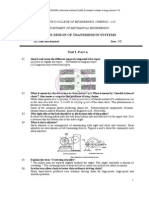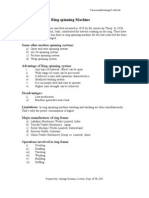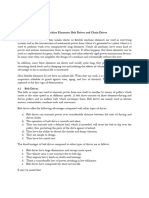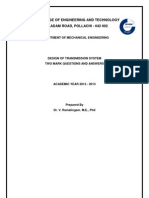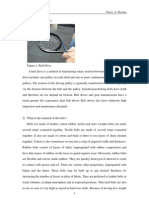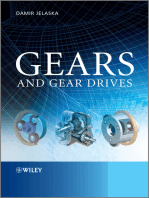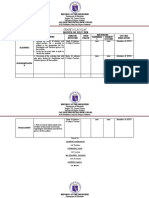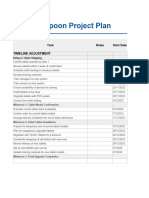0 ratings0% found this document useful (0 votes)
27 viewsStudy of Drives
Study of Drives
Uploaded by
rayentahsha75Drives
Copyright:
© All Rights Reserved
Available Formats
Download as PDF, TXT or read online from Scribd
Study of Drives
Study of Drives
Uploaded by
rayentahsha750 ratings0% found this document useful (0 votes)
27 views3 pagesDrives
Original Title
Study of drives (2)
Copyright
© © All Rights Reserved
Available Formats
PDF, TXT or read online from Scribd
Share this document
Did you find this document useful?
Is this content inappropriate?
Drives
Copyright:
© All Rights Reserved
Available Formats
Download as PDF, TXT or read online from Scribd
Download as pdf or txt
0 ratings0% found this document useful (0 votes)
27 views3 pagesStudy of Drives
Study of Drives
Uploaded by
rayentahsha75Drives
Copyright:
© All Rights Reserved
Available Formats
Download as PDF, TXT or read online from Scribd
Download as pdf or txt
You are on page 1of 3
Daffodil International University
Department of Textile Engineering
Course Code: TE206, Course Title: Yarn Manufacturing I Sessional
Report of Lab Performance
Student’s ID.: Date of Performance:
Experiment No.
Experiment Name: Study on different type of drives used in textile machineries.
Theory:
Drives are components of electro mechanical machine by which motion are transmitted from one
component to another component.
Types of drives:
1) Pulley and belts
2) Gear
3) Sprocket and chain
4) Tappet
5) Variable drives
Objectives of the Experiment:
Description of different type of drives:
1) Pulley and belt: A belt is a loop at flexible material
used to mechanically link to rotating shafts most often
parallel belt may be used as a source of motion to
transmit power efficiently. Belts are looped over
pulleys. In two pulley system are belt can either drive
the pulleys. Normally in one direction or the belt may
be crossed. So that, the direction of the drives shaft in
reversed.
Daffodil International University
Department of Textile Engineering
Course Code: TE206, Course Title: Yarn Manufacturing I Sessional
Types of pulley and belts:
a) Flat pulley
b) V-belt
c) Timing belt
d) Round belt
a) Flat pulley and belt: The flat belt is a simple system
of motion transmission it can deliver high power at
high speed. But this wide belt and large pulley
required lot of space and high tension for operation.
b) V-belt: V-belt are mostly used for transmission
motion. They provide the best combination of traction
high speed of movement and large long service life. It
solved the alignment problem but it still there is a
called slippage.
c) Timing belt: When the slippage of belt is a big
matter to production there we used timing belt.
d) Round belt: Round belt are circular cross section
belt designed to run pulley with V-belt groove. Round
groove are only suitable pulley that guide the belt.
2) Gear: A gear is a rotating machine parts having cut
teeth which mesh with another toothed part to transmit
power.
Types of gear:
a) Spur gear or Straight cut gear
b) Helical gear
c) Bevel gear
d) Worm gear
a) Straight cut gear or Spur gear: These are simplest
type of gear. They consist of a cylinder or disk with
projecting radially. The each tooth is straight and align
parallel to the axis of rotation.
Daffodil International University
Department of Textile Engineering
Course Code: TE206, Course Title: Yarn Manufacturing I Sessional
b) Helical gear: It after a refinement over straight cut
gear. The leading edges of the teeth are not parallel to
the axis of rotation, but are set of an angle.
c) Bevel gear: A bevel gear is shaped like right
circular cone with most of its. It stands and make 45
degree angle to transmit motion.
d) Worm gear: Worm gear are used when bagel gear
reduction are needed. It’s common for worm gear to
have reductions of 20:1 and even up to 300:1 or
greater.
3) Sprocket and chain: A sprocket wheel is a profiled
wheel with teeth or even sprockets that mesh with a
chain tracker or other perforated or ideated material.
4) Tappet: A tappet is a projection that impact a
linear motion of some other component with is a
mechanism.
5) Variable drive: Its show the drive motion in time
constantly.
Precautions:
Conclusion:
You might also like
- Machine Design Elements and AssembliesFrom EverandMachine Design Elements and AssembliesRating: 3.5 out of 5 stars3.5/5 (2)
- Project Report On Design of Belt ConveyorDocument13 pagesProject Report On Design of Belt Conveyorsrinithi99100% (1)
- Automatic Flight Control SystemDocument50 pagesAutomatic Flight Control SystemZay Yar100% (1)
- Me8651 QBDocument27 pagesMe8651 QBselvam cNo ratings yet
- Lesson Note On Basic Technology JSS 2 Third TermDocument37 pagesLesson Note On Basic Technology JSS 2 Third Terminestimablelord100% (2)
- 073 - ME8651, ME6601 Design of Transmission Systems - 2 Marks With AnswersDocument19 pages073 - ME8651, ME6601 Design of Transmission Systems - 2 Marks With AnswersJ O NNo ratings yet
- Me 2352 Design of Transmission Systems: III Year MechanicalDocument14 pagesMe 2352 Design of Transmission Systems: III Year MechanicalAravinthan VijayanNo ratings yet
- ME6601Document28 pagesME6601Sridiwakaran ParameswaranNo ratings yet
- Design of Transmission Systems (ME61) Two MarksDocument14 pagesDesign of Transmission Systems (ME61) Two Marksgpskumar22No ratings yet
- Design of Transmission Systems Part ADocument32 pagesDesign of Transmission Systems Part Akannanviknesh086319No ratings yet
- Design of Transmission System: Two Marks With Answer Unit - I Bearings& Rolling ContactDocument13 pagesDesign of Transmission System: Two Marks With Answer Unit - I Bearings& Rolling ContactM.ThirunavukkarasuNo ratings yet
- Microproject TOMDocument12 pagesMicroproject TOMSohamNo ratings yet
- Conveyor Belt TroublesDocument10 pagesConveyor Belt Troublessri0589100% (1)
- Fabrication of Mini Conveyor Using Mechanical (Geneva) Mechanism4Document14 pagesFabrication of Mini Conveyor Using Mechanical (Geneva) Mechanism4Nilesh patilNo ratings yet
- Conveyor Belt Troubles (Bulk Material Handling) : June 2014Document11 pagesConveyor Belt Troubles (Bulk Material Handling) : June 2014Minh ThiNo ratings yet
- BME M5 Ktunotes - inDocument27 pagesBME M5 Ktunotes - inamithr951No ratings yet
- CONVEYORBELTTROUBLESJUN2014Document11 pagesCONVEYORBELTTROUBLESJUN2014rismaawati1975No ratings yet
- ME6601-Design of Transmission Systems PDFDocument27 pagesME6601-Design of Transmission Systems PDFJeevitha RNo ratings yet
- Ring Spinning MachineDocument11 pagesRing Spinning MachinePradip Gupta100% (1)
- In Plant Training - ReportDocument8 pagesIn Plant Training - ReportVengadasubramanianNo ratings yet
- Coin Box Based Automatic WheelDocument53 pagesCoin Box Based Automatic WheelAakash DindigulNo ratings yet
- Design Consideration of Adjustable Height and Radial Belt Conveyor SystemDocument6 pagesDesign Consideration of Adjustable Height and Radial Belt Conveyor SystemseventhsensegroupNo ratings yet
- Experiment No. 11Document12 pagesExperiment No. 112019me102No ratings yet
- Study of Power Transmission DevicesDocument11 pagesStudy of Power Transmission Devices01parthNo ratings yet
- EMG 4213 Chapter FourDocument43 pagesEMG 4213 Chapter FourAbel OmweriNo ratings yet
- ME 1352 Design of Transmission SystemsDocument14 pagesME 1352 Design of Transmission SystemsRameez FaroukNo ratings yet
- IJRPR25919Document5 pagesIJRPR25919dharmraj0678No ratings yet
- Me6601 QB 4 PDFDocument15 pagesMe6601 QB 4 PDFpremgmech762No ratings yet
- Chapter 2 Notes - BME - May - 2023Document49 pagesChapter 2 Notes - BME - May - 2023gamingendless003No ratings yet
- Elmes2 Belt DriveDocument52 pagesElmes2 Belt DriveDodyexNo ratings yet
- LINK Shop ExerciseDocument15 pagesLINK Shop ExerciseNicole MilanNo ratings yet
- Conveyor Belt SystemsDocument6 pagesConveyor Belt SystemsJigneshkumar PatelNo ratings yet
- Design of Transmission System - 2 Marks - All 5 UnitsDocument20 pagesDesign of Transmission System - 2 Marks - All 5 UnitsMohan Prasad.M80% (15)
- A New Modern Belt Drive TransmissionDocument19 pagesA New Modern Belt Drive Transmissiontejas pawarNo ratings yet
- Machine Design II (MD) Q&ADocument4 pagesMachine Design II (MD) Q&APankaj SharmaNo ratings yet
- Belts Rope Chains and BrakesDocument15 pagesBelts Rope Chains and BrakesJames WankerNo ratings yet
- QBDocument18 pagesQBSenthil Kumar PeriyasamyNo ratings yet
- Theory of Machine - AssignmentDocument12 pagesTheory of Machine - AssignmentNeo NianshouNo ratings yet
- PL Group 1Document15 pagesPL Group 1dharmraj0678No ratings yet
- mODULE #3. Machine Elements .FinalsDocument21 pagesmODULE #3. Machine Elements .FinalsRocsNo ratings yet
- 6038962Document52 pages6038962patrickNX9420No ratings yet
- Belts and Rope DrivesDocument40 pagesBelts and Rope DrivesAndrey MantaNo ratings yet
- Two marks question bank - dtsDocument47 pagesTwo marks question bank - dtstridentweaponNo ratings yet
- DTSDocument26 pagesDTSvijayakumarNo ratings yet
- Air Conditioning CycleDocument36 pagesAir Conditioning CycleS V Garata ReddyNo ratings yet
- DTS Two Marks QADocument12 pagesDTS Two Marks QASoundararajanNo ratings yet
- Maintenance Project RevisedDocument19 pagesMaintenance Project Revisednurlignasmamaw73No ratings yet
- 2022.timing BeltDocument6 pages2022.timing BeltMd NurunnabiNo ratings yet
- Unit 4 Power TransmissionDocument92 pagesUnit 4 Power TransmissionMohit BagurNo ratings yet
- Laporan Peralatan Pabrik Belt ConveyorDocument15 pagesLaporan Peralatan Pabrik Belt ConveyorKanzul FadhilNo ratings yet
- تقرير فاينل صناعية ١Document9 pagesتقرير فاينل صناعية ١سجاد المالكيNo ratings yet
- DTS Two Marks Q&ADocument20 pagesDTS Two Marks Q&AKesava Prasad100% (1)
- Md. Mustafizur Rahman, Textile EngineeringDocument11 pagesMd. Mustafizur Rahman, Textile EngineeringMd. Mustafizur RahmanNo ratings yet
- Belt Drives 24Document16 pagesBelt Drives 24jimmy mlelwaNo ratings yet
- Name: Mahmudul Hasan ID: 181-014-041 Section: A Course Title: Yarn Manufacturing Technology - 2 (Lab) Course Code: TXE-302Document8 pagesName: Mahmudul Hasan ID: 181-014-041 Section: A Course Title: Yarn Manufacturing Technology - 2 (Lab) Course Code: TXE-302Mahmudul HasanNo ratings yet
- Unit 1Document25 pagesUnit 1robinston jeyasinghNo ratings yet
- Unit ReportDocument12 pagesUnit Reportalaa59mahmoudNo ratings yet
- Lab No 2 Meen201101037Document14 pagesLab No 2 Meen201101037Ali MunawarNo ratings yet
- 2023.09.15 Chapter 4 Belt DriveDocument60 pages2023.09.15 Chapter 4 Belt DriveThiện Hòa TrầnNo ratings yet
- Sinhgad College of Engineering, Pune Department of Mechanical EngineeringDocument16 pagesSinhgad College of Engineering, Pune Department of Mechanical EngineeringDrive CNLNo ratings yet
- 1bam QnsDocument4 pages1bam Qnslutubaraca856No ratings yet
- DST200 UserManual v5Document66 pagesDST200 UserManual v5Jalberto SaldivarNo ratings yet
- CS6640 F2014 Fourier I PDFDocument39 pagesCS6640 F2014 Fourier I PDFAya MohmmedNo ratings yet
- Apostrophe Rules For PossessivesDocument4 pagesApostrophe Rules For PossessivesVeranika DalzhukNo ratings yet
- Admission Notice: Dr. Babasaheb Ambedkar Technological UniversityDocument8 pagesAdmission Notice: Dr. Babasaheb Ambedkar Technological Universityashwinswami5No ratings yet
- Mam Rabia Sabir: Submitted ToDocument10 pagesMam Rabia Sabir: Submitted ToFahad KamranNo ratings yet
- Philippine Popular CultureDocument17 pagesPhilippine Popular Cultureeric generaleNo ratings yet
- Stand and Themes of LingDocument3 pagesStand and Themes of LingMaria CristinaNo ratings yet
- Journal AnalysisDocument4 pagesJournal AnalysisKhoa TangNo ratings yet
- CPG 101Document172 pagesCPG 101Doc LumpkinsNo ratings yet
- MaintenanceDocument29 pagesMaintenanceDeepesh MerchantNo ratings yet
- Ayurveda Lucella CjenikDocument1 pageAyurveda Lucella CjenikHrvatski strelicarski savezNo ratings yet
- Teaching Materials Development of Student Work Sheet (SWS) Guided Inquiry Based On The Materials For Learning Rate of Chemical ReactionDocument6 pagesTeaching Materials Development of Student Work Sheet (SWS) Guided Inquiry Based On The Materials For Learning Rate of Chemical ReactionElvitriNo ratings yet
- Hirarc and Safety CultureDocument63 pagesHirarc and Safety Culturesyaqirah shahriNo ratings yet
- Intenship Report Sumit Nagar PDFDocument14 pagesIntenship Report Sumit Nagar PDFSumit NagarNo ratings yet
- Grade 10 Lac Plan: Month of July 2020Document10 pagesGrade 10 Lac Plan: Month of July 2020StephanieNo ratings yet
- Activity Template - Project Plan Sauce & SpoonDocument50 pagesActivity Template - Project Plan Sauce & SpoonfelysiapratamaaNo ratings yet
- New CV PahmiDocument2 pagesNew CV Pahmipahmi hamdaNo ratings yet
- Load 3Document1 pageLoad 3Kashyap KanhaiyaNo ratings yet
- American Statistical Association, Taylor & Francis, Ltd. The American StatisticianDocument8 pagesAmerican Statistical Association, Taylor & Francis, Ltd. The American StatisticianbasdggwawggNo ratings yet
- BEE III IL ספר תחזוקה באנגלית קומפלט 050807Document36 pagesBEE III IL ספר תחזוקה באנגלית קומפלט 050807Lior EisenfeldNo ratings yet
- 2nd PUC PhysicsJan 2016 PDFDocument2 pages2nd PUC PhysicsJan 2016 PDFPrasad C M90% (10)
- JDocument13 pagesJJosé GonzálezNo ratings yet
- Wartsila O E RT Flex60c MIMDocument376 pagesWartsila O E RT Flex60c MIMNirmal Raj Chopra100% (1)
- BMW - Approved AntifreezeDocument1 pageBMW - Approved Antifreezehellfire22000100% (1)
- Approved - Guidance: GNB-CPDDocument23 pagesApproved - Guidance: GNB-CPDHelloKids Poppins100% (1)
- A Study On Promotion Strategies of Mobile Phone With Special Reference To OppoDocument83 pagesA Study On Promotion Strategies of Mobile Phone With Special Reference To OppoDeep ChoudharyNo ratings yet
- Basic Manufacturing ProcessesDocument72 pagesBasic Manufacturing ProcessesPartho Roychoudhury67% (6)
- Module 1 (Learning Assessment)Document5 pagesModule 1 (Learning Assessment)Filipino 1 Maedelyn De GuzmanNo ratings yet






